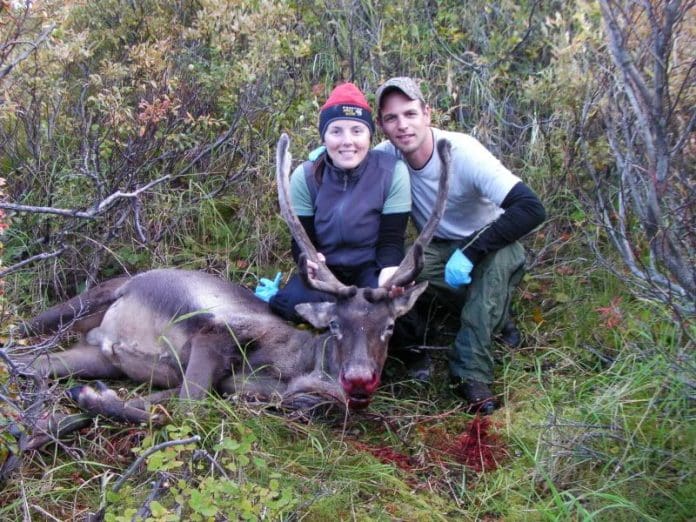Clothing Systems
by Luke & Becca Moffat
When it comes to finding clothing for the backpack hunter, there has never been a better time to find exactly what each hunter needs given ones expected use in a given climate. Today’s fabrics are tougher, more comfortable, more breathable, more waterproof, and warmer given the same amount of weight than ever before. With all the options and manufacturers out there providing clothing geared towards hunting, choosing the best attire can get a bit confusing. I have found that creating a “clothing system” that works for you really helps in narrowing down what garments best fit your needs.
After several years of trial and error I have finally broken my clothing system down to three simple parts:
1) Base Layer
Base layers are the first thing you put on for a hunt, and for me they often don’t come off until I get back. Base layers include socks, underwear/boxers, and long underwear tops and bottoms. The purpose of a base layer is to provide warmth as well as to wick moisture off the skin. There are two major types of base layers: synthetics and merino wool. Synthetics are generally less expensive than merino wool and are produced by companies such as Under Armor and Patagonia to name a couple.
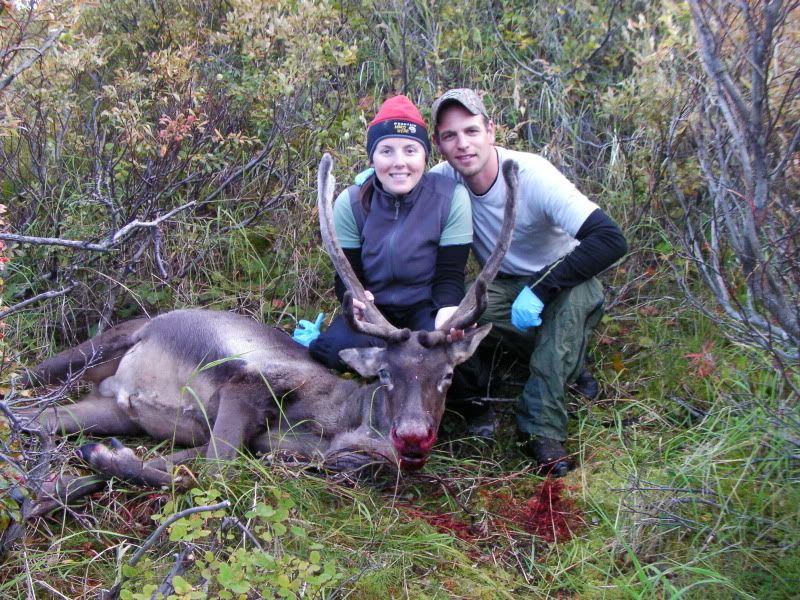
Merino wool base layers, on the other hand, are generally more expensive. First Lite, Ibex, Smartwool and Stoic are just a few major companies offering merino wool clothing. I have found that I have all but abandoned synthetics in favor of merino wool for my base layer, in spite of the larger price tag. I was initially hesitant to try merino wool, as just hearing the word “wool” I almost instantly begin to itch. After pretty extensive use, I have found this to not be an issue. In fact, merino is not only soft and itch-free, but it is even more comfortable than a synthetic garment of the same style. Another reason I prefer merino wool over synthetic is it’s inherit ability to mask my stench after 10 days out chasing critters in the mountains. While I can guarantee you that hanging around me after so long without a shower will never be pleasant, I find that my “sphere of influence” is drastically reduced compared to spending the same amount of time in the field while wearing a synthetic base layer.
Another redeeming quality of merino wool is that it seems to keep me warmer when wet from either sweat or the elements, when compared to synthetics. Synthetic fabrics generally left me feeling clammier after days afield in high humidity and rain. Merino wool seems to wick moisture better, keeping me warmer as it dries. The budget minded hunter will be well served with synthetic type base layers, as both merino wool and synthetics will keep one warm, and dry out seemingly at the same rate, but for my uses the additional benefits of merino wool over the synthetic fabrics makes it worth the extra money.
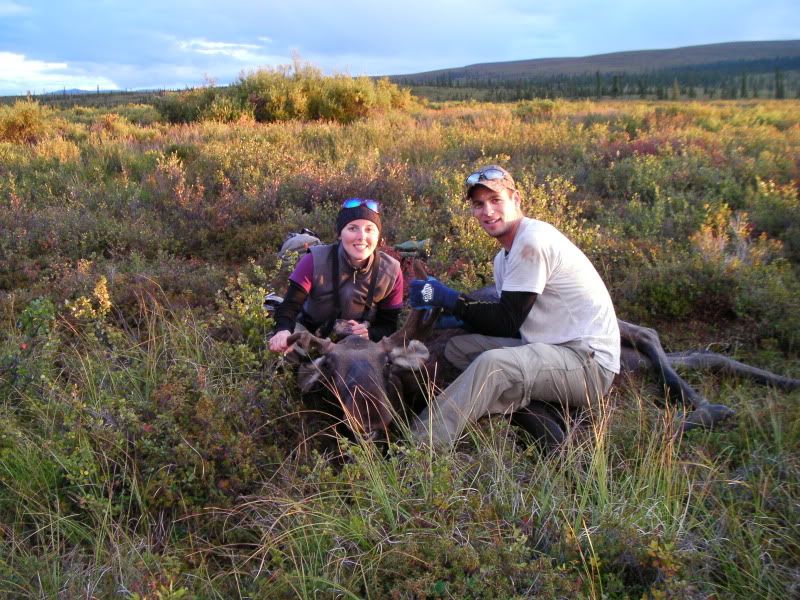
Base Layer
I rarely have a long underwear base layer on the bottom unless it is unseasonably cold for that time of year, as either my bottom insulation layer or my weather protection layer (rain pants) often act to keep me warm. Instead, I normally wear a pair of lightweight/durable pants that dry fast after getting wet. In fact in most cases, after crossing a thigh high creek my pants will be dry in 10 to 15 minutes of hiking (assuming its not raining, and I am not walking through wet brush). While many of these styles of pants go for $100 to $200, I have found that I prefer a simple $45 pair of fishing style pants with cargo pockets such as the Columbia Aruba IIIs. These pants are lighter and dry faster than any other pants I have used. The lower legs of the pants can also be zipped off to make shorts on warmer days when not hiking in brush. This goes to show that sometimes the most expensive option isn’t always the best choice for one’s given application.
2) Insulation Layer
I have found that while aggressively hiking with minimal wind that I can keep warm in just my base layers, lightweight pants, and my rain gear down to 30 degrees or so. Of course everyone’s threshold for comfort is different, but this has been my experience. However once I stop to glass, take a break, eat, or hang out in camp at those temperatures I quickly become aware that I need to keep warmer. This is when I pull the insulation layer out of my pack. Insulation layers come in a variety of materials. However, the main three materials I see most commonly are fleece, synthetic fill, and down fill.
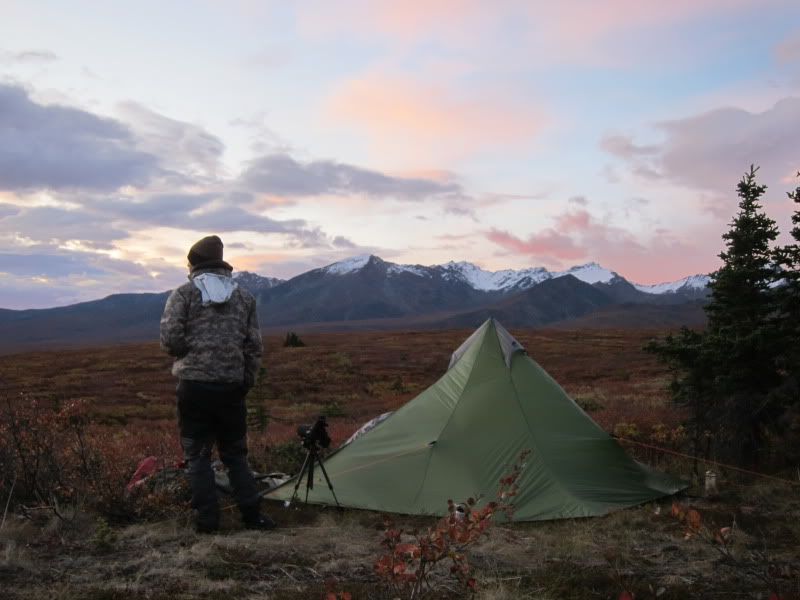 Insulating Layer
Insulating Layer
Generally, I have found fleece to be the cheapest of the three materials used for insulation. Fleece works well to insulate and is even better if it is also windproof. The draw back with fleece compared to down or synthetic insulation is the volume it takes up in your pack, as well as how much it weighs given the same warmth provided. Fleece also will still keep you warm even if it’s wet, and dries out quickly. If you have ever washed a fleece garment in your washer, you’ll notice when you pull them out after the spin cycle that they feel nearly dry. Fleece works very well and if you are willing to give up a little weight saving and some space in your pack it’s a great value as an insulation layer.
Down is the lightest and packs the smallest of the three major types of insulation. Some lightweight down jackets and pants have weights into the single digit ounces, which is quite impressive given the warmth they provide. However, like down sleeping bags, the concern with down is its inability to insulate if it gets wet. For someone hunting in the high deserts of the southwest or dealing with temperatures well below freezing this is rarely an issue, as water in the liquid form is rare. Thus when the odds of getting wet are low, down can be an option and a great way to get your insulation layer for minimal space and weight penalty in your pack.
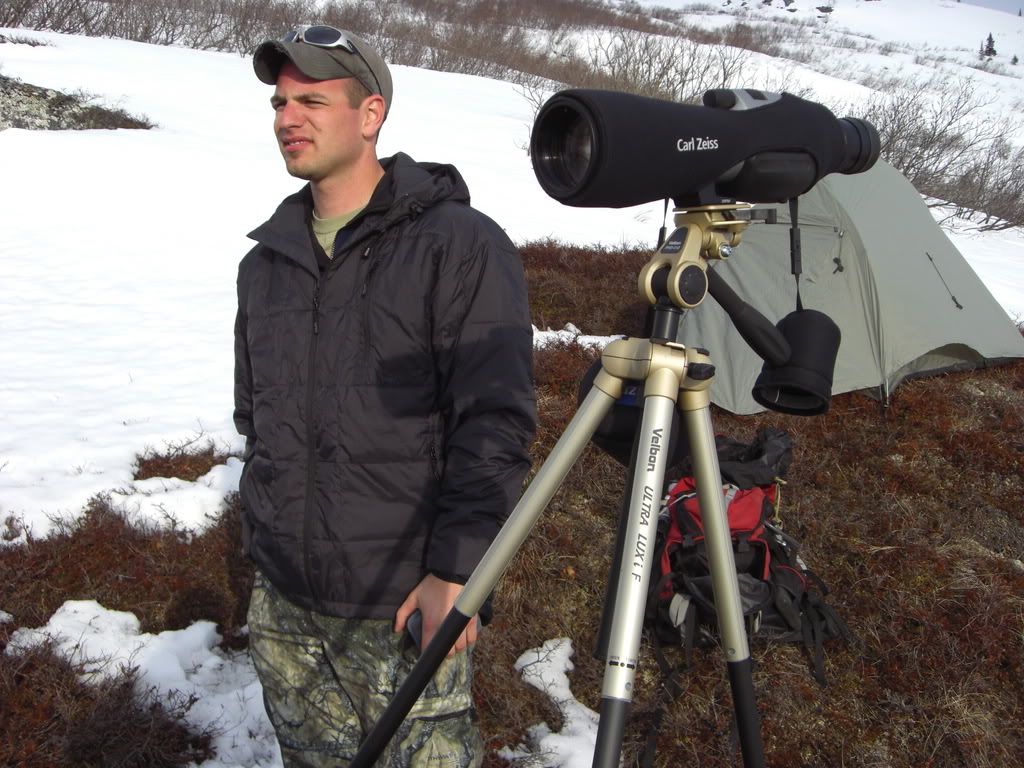
Insulating Layer
Here in Alaska, I have found it acceptable to save weight by using a down sleeping bag in many instances, due to using a quality tent and dry bags to store it in while in the pack. However, the same isn’t true for my insulation layer. The simple fact that I wear my insulation layer in less than ideal conditions means the chances of it getting wet are quite a bit higher than my sleeping bag that is protected at all times. For this reason, a synthetic filled jacket and pants is the insulation layer of choice for my purposes, as synthetic insulation will still retain some of its insulating properties even when wet. For instance, I once got my insulating jacket wet after packrafting a creek for several hours in splashy class II rapids. By the time I discovered that I had failed to secure my jacket in a dry bag, it was dripping wet. I rung it out as best I could and was pleasantly surprised to find that it would still keep me warm (of course not as well as when it was dry though). Synthetic fill jackets do not dry out as well as fleece once they are wet, and in the instances that my synthetic fill jacket got wet it remained damp for the remainder of the trip, though it still was warm. While not as small and light as down given the same warmth provided, my synthetic fill jacket it is still smaller and lighter than a comparable garment in fleece. I have found it to be the best compromise for my uses. I currently utilize a SuperCub Jacket from Barney’s Sports Chalet, and Mountain Hardware Compressor Pants, both of which are insulated with PrimaLoft.
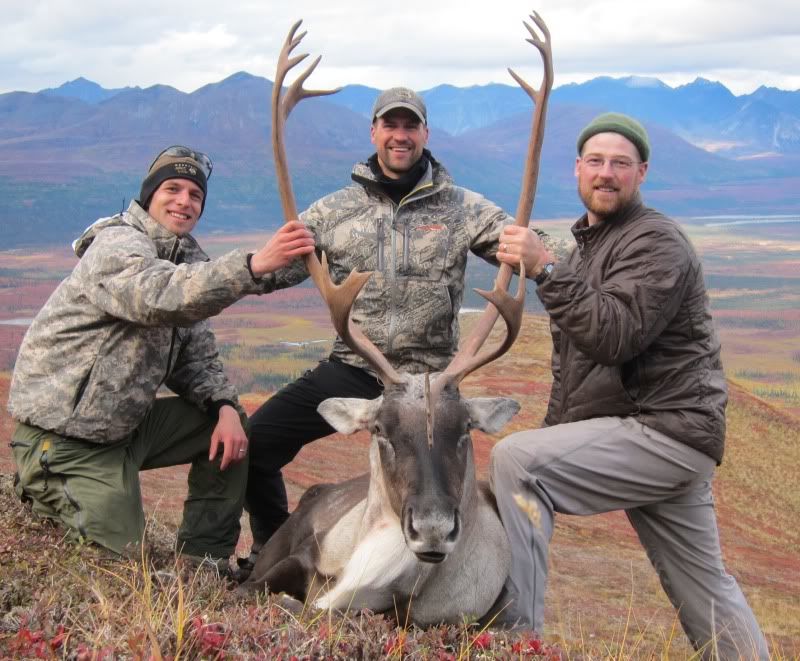
Insulating Layer
Insulation layers are one of those items that are always in my pack when I leave camp for the day. On more than one occasion I have found that it can make an unexpected night on the mountain away from camp quite a bit more comfortable, in addition to just being nice to throw on when you stop to glass on a windy ridgeline for a few hours or when just hanging around in camp on a cold morning while gearing up for the day.
3) Weather Protection Layer (Rain Gear)
This may be the most crucial layer, in my honest opinion. The fun factor can get sucked right out of a hunt if you are getting wet from the rain, sleet, and snow due to a failure in your rain gear. Rain gear is made in many materials and at a variety of price points from inexpensive like Frogg Toggs for $60 tops and bottoms combined, to setups like Sitka Stormfront which retail for nearly $1000. The climate and terrain in which you hunt will often dictate how crucial having quality rain gear is. A guy in the Arizona desert isn’t going to really need top notch rain gear, whereas someone mountain goat hunting in southeast Alaska will likely live in his rain gear all hunt long.
When considering raingear for purchase, you’ll quickly see that for relatively inexpensive rain gear the choices are lightweight, truly waterproof, and breathable, but you’ll have to pick any two as if you want all three the price goes up dramatically. For me, the added expense of truly waterproof rain gear, while still being breathable and lightweight, is worth the extra cost. You don’t have to spend $1000 to get there, but chances are, a good setup will cost you around $300-$600. It’s often been said that lightweight and breathable raingear is kind of an oxymoron, and for the lower tier breathable rain gear this has certainly been true in my experience. The cheaper lightweight raingear usually does fine for several hours in the rain, but when the hours turn into days eventually it seems to saturate the jacket and pants.
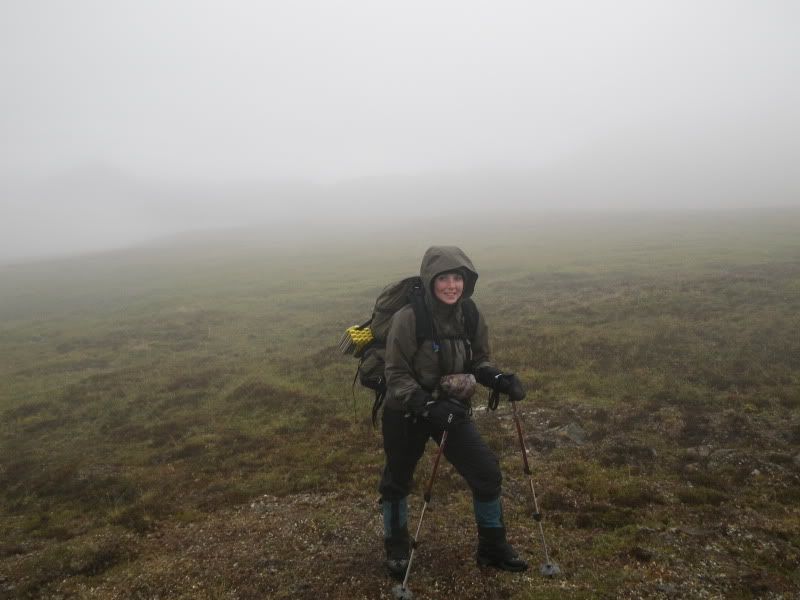
Weather Protection Layer
To combat this, many in Alaska have gone to using rubberized style rain gear. I am impressed with the Impertech line from Helly Hansen as it’s lighter than most offerings in this style, while still being relatively inexpensive. That said, it is certainly not breathable. Non-breathable waterproof rain gear is great if you are sitting and glassing in the rain and the like, but when you point your boots towards a 2,000’ vertical push with a loaded pack on, the game changes. I found that when hiking in non-breathable rain gear, I no longer got wet from the rain, but rather my base layer was soaked, as moisture my body created while hiking was being trapped under the rain gear. The end result was I got wet anyways, just in a different manner.
In order to avoid both getting wet after several days in a rain storm with cheaper breathable rain gear, as well as getting wet from “the storm within” under non-breathable rain gear, I began researching in earnest for better options. I quickly came to realize it was going to cost me some money to stay dry in the wet and rainy backcountry. High end mountaineering companies such as Arcteryx and Westcomb offered what I was looking for in rain gear. Reluctantly, I shelled out the coin for this style of jacket and took it out to the field on my next trip. I was elated to find that I hadn’t spent my money in vain, as I was able to stay dry even while hiking with a pack on in the rain.
In addition to keeping you dry, rain gear can also act as a windbreaker, or as another layer to help keep you warmer while hiking when the temperature drops. That is part of the reason comfortable rain gear is a must for me, as I don’t pack a soft shell jacket and often just wear my rain gear in its place. Personally, I have no use for soft shell jackets while hunting. They do not keep you nearly as warm as a good insulating layer, nor do they work well to keep you dry in any kind of rain beyond a sprinkle that lasts for more than a couple minutes. Given this, a couple years ago I abandoned the idea of a soft shell jacket all together and saved the space and weight in my pack. I realize many still really like soft shell jackets, but for my uses I have found I can stay warm and dry without them by just utilizing the garments I was already bringing along. I would much rather save the money I would have spent on a soft shell jacket and apply it to my weather protection layer, because like most things in life you get what you pay for.
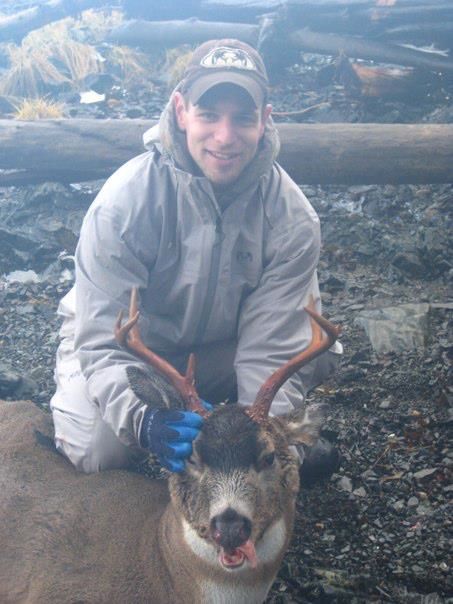 Up until about 5 or so years ago, the best options available to the backpack hunter for clothing systems came from the mountaineering market. Companies such as Kuiu, Sitka, and Kryptek, to name a few, are a beginning to give us backpack hunters well designed clothing in similar fabrics and materials with the hunter in mind. Before such companies were around, if you wanted camo clothing you’d often have to buy heavier, poorly cut garments that were more adapted to hunting deer out of a tree stand than backpacking up the side of a mountain to chase deer, sheep, or mountain goats. From pockets in the right places, to offering their fabrics in camo, these companies have found a niche that has been lacking in the hunting market. All three of these companies offer base layers, insulating layers, and weather protection layers, so it is possible to get a complete system from them by doing a one stop shop. For me however, I have found that it’s often better and cheaper to pick and choose where you get certain parts of your clothing system from. Sometimes the company that makes the best base layer might not be your best choice for an insulating layer for example.
Up until about 5 or so years ago, the best options available to the backpack hunter for clothing systems came from the mountaineering market. Companies such as Kuiu, Sitka, and Kryptek, to name a few, are a beginning to give us backpack hunters well designed clothing in similar fabrics and materials with the hunter in mind. Before such companies were around, if you wanted camo clothing you’d often have to buy heavier, poorly cut garments that were more adapted to hunting deer out of a tree stand than backpacking up the side of a mountain to chase deer, sheep, or mountain goats. From pockets in the right places, to offering their fabrics in camo, these companies have found a niche that has been lacking in the hunting market. All three of these companies offer base layers, insulating layers, and weather protection layers, so it is possible to get a complete system from them by doing a one stop shop. For me however, I have found that it’s often better and cheaper to pick and choose where you get certain parts of your clothing system from. Sometimes the company that makes the best base layer might not be your best choice for an insulating layer for example.
Above is what I have found works best for me. Keeping it simple, while still effective has allowed me to lighten my pack while still remaining well prepared for what the elements can throw at me. Staying warm and dry in the backcountry even when its sleeting at 35 degrees is when you quickly come to realize the value of a quality clothing system. Like I stated earlier, everyone’s needs are different depending what a person is comfortable in given a certain climate. It’s up to you to dial in what clothing system works best for you and which materials, fabrics, and companies will best prepare you to tackle the backcountry given your specific price point.














